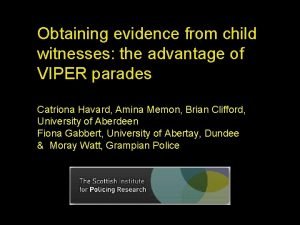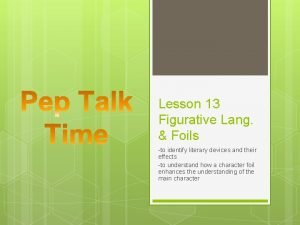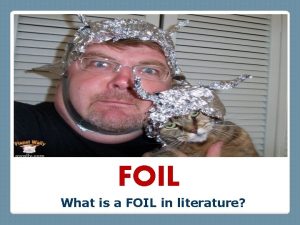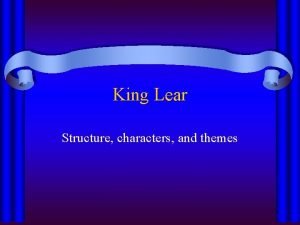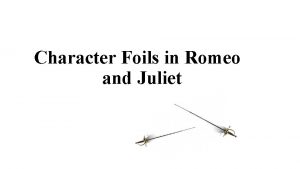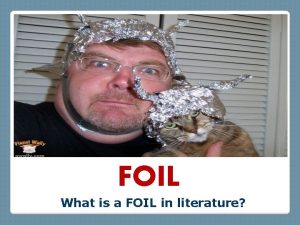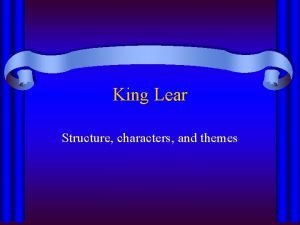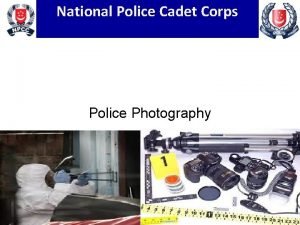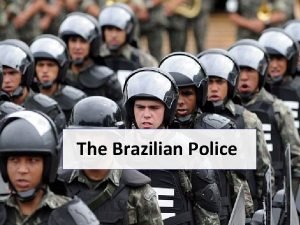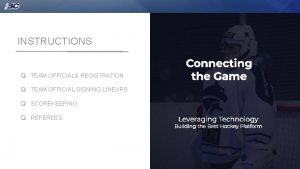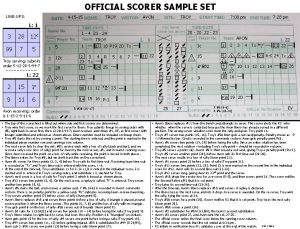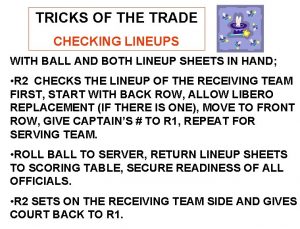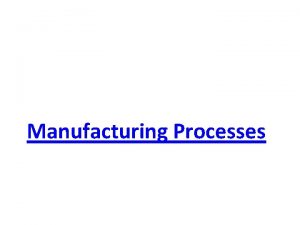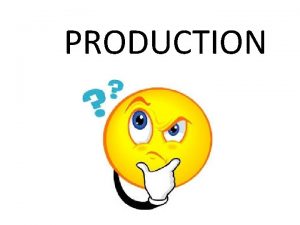Manufacturing foils for police lineups with an artificial























- Slides: 23

Manufacturing foils for police lineups with an artificial face synthesizer Caitlin Grist & Colin Tredoux Department of Psychology University of Cape Town AP-LS March 2013

How to choose fillers for lineups?

Selection strategies • Match to suspect – foils are chosen to meet some degree of subjective physical similarity [usually facial similarity] to the suspect • Match to description of perpetrator – foils are chosen to match a number of the descriptors given of the perpetrator by the eyewitness

Selection strategies - issues • Match to suspect – how much similarity? – who decides? on what basis? • Match to description – person descriptions are usually vague – default descriptors can be a problem

Automating match-to-suspect • A decade working with synthetic faces – ID, an eigenface compositor • Recently developed a lineup generator tool – can specify number of foils required and level of similarity


Experiments • Experiment 1 – are the faces believed to be realistic? • Experiment 2 – can we control suspect-foil similarity so that it has convincing results? • Experiment 3 – test lineups for fairness, using mock witness methods

Experiment 1 • 49 student participants • Each shown 25 real faces and 25 artificial faces • Asked to rate as either real or fake • Additional questions to determine reasons for differential ratings, if any – e. g. how natural is the face? rate the picture quality


Results Testing against chance performance Fake Mean SD df t calc r 0. 47 0. 49 48 -0. 43 -0. 06

Results Testing against chance performance Mean SD df t calc r Fake 0. 47 0. 49 48 -0. 43 -0. 06 Real 0. 67 0. 47 48 2. 53 0. 34

Results Mean Real Fake t p d Realness 5. 77 4. 83 4. 8 <. 05 . 41 Picture Quality 5. 71 4. 77 5. 0 <. 05 . 43 Naturalness 5. 67 4. 8 4. 5 <. 05 . 38

Discussion • Greater than chance accuracy when the faces were real • No difference from chance when faces were artificial • Real faces rated higher than artificial faces on all additional questions • Effect sizes small to moderate

Experiment 2 • Using a face recognition paradigm: – Three suspects chosen to vary in similarity to perpetrator [3 perpetrators; sampling factor] – Five lineups generated for each suspect, of varying average foil-suspect similarity – Perpetrator present and perpetrator absent lineups used – i. e. Perp-suspect-sim X suspect-foil-sim

Example of high-suspect similarity lineup 15

Example of low-suspect similarity lineup 16

Exp 2, Method cont. • 150 student participants • Viewed target face (2 s) • Distractor task (3 mins) • Shown lineup and asked to choose person they saw, if present • Each participant viewed 3 lineups

Results

Experiment Three • Mock witness procedure used to assess bias and effective size of sub-sample of lineups used in Exp 2 [only looked at P-P lineups; needs to be re-done for all lineups] – Modal description generated for each of the 3 perpetrators from 6 ‘pilot’ witnesses – 125 student participants • Each presented with a description of target face 19 • Shown corresponding lineup and asked to choose

Results 20

Discussion • Higher levels of suspect-foil similarity result in greater fairness – protects against poor witnesses • But Study 2 shows high levels of suspect-foil similarity suppress Hits – this is a trade-off that we have to decide at a different level of discussion 21

Conclusions • The current research provides some promise for a lineup generator • Artificial faces pass an important test of ‘detectability’ • We are able to manipulate similarity of suspect to foils in predictable ways, and that makes me think we can address the optimal similarity problem

Fin
 Viper lineups
Viper lineups Job order costing vs process costing
Job order costing vs process costing Non controllable cost
Non controllable cost Manufacturing cost vs non manufacturing cost
Manufacturing cost vs non manufacturing cost Manufacturing cost vs non manufacturing cost
Manufacturing cost vs non manufacturing cost Additively
Additively Literary foils
Literary foils Three apparitions in macbeth meaning
Three apparitions in macbeth meaning Foil definition literature
Foil definition literature King lear motifs
King lear motifs Foils in hamlet
Foils in hamlet Foil characters in romeo and juliet
Foil characters in romeo and juliet What are foils in literature?
What are foils in literature? Character traits of capulet
Character traits of capulet Structure of king lear
Structure of king lear Elektronik för barn
Elektronik för barn Personalliggare bygg undantag
Personalliggare bygg undantag Toppslätskivling effekt
Toppslätskivling effekt Borra hål för knoppar
Borra hål för knoppar Bris för vuxna
Bris för vuxna Mat för idrottare
Mat för idrottare Smärtskolan kunskap för livet
Smärtskolan kunskap för livet Trög för kemist
Trög för kemist Teckenspråk minoritetsspråk argument
Teckenspråk minoritetsspråk argument
